|
| |
Archives
global climate change
This is probably the finest piece on global climate change that I've read. It's a three part piece in the New Yorker by Elizabeth Kolbert. Unfortunately, only two of the parts are online. Fortunately for me, Zoe has a dead tree subscription. Read the interview with Elizabeth Kolbert and the first two parts on line and make a trip to your local library.
A Planetary Problem
|
AMY DAVIDSON: What is global warming? Is it real, or theoretical?
ELIZABETH KOLBERT: I guess you could say that that depends on what the meaning of the word “is” is. The principles of global warming are as well established as any in physics. Nearly a hundred and fifty years ago, a British physicist named John Tyndall discovered that certain gases in the atmosphere—we now refer to these as “greenhouse gases”—trap heat on earth by absorbing infrared radiation. There are several naturally occurring greenhouse gases, including carbon dioxide and water vapor, and together they produce the so-called “natural greenhouse effect.” Without the natural greenhouse effect, the planet would essentially be frozen. Any basic earth-science textbook talks about the natural greenhouse effect; it’s a phenomenon that is not in any way debated. All that the theory of global warming says is that if you increase the concentration of greenhouse gases in the atmosphere, you will also increase the earth’s average temperature. It’s indisputable that we have increased greenhouse-gas concentrations in the air as a result of human activity, and it’s also indisputable that over the last few decades average global temperatures have gone up. As best as can be determined, the world is now warmer than it has been at any point in the last two millennia, and, if current trends continue, by the end of the century it will likely be hotter than at any point in the last two million years.
| |
[more]
THE CLIMATE OF MAN—I
|
The Alaskan village of Shishmaref sits on an island known as Sarichef, five miles off the coast of the Seward Peninsula. Sarichef is a small island—no more than a quarter of a mile across and two and a half miles long—and Shishmaref is basically the only thing on it. To the north is the Chukchi Sea, and in every other direction lies the Bering Land Bridge National Preserve, which probably ranks as one of the least visited national parks in the country. During the last ice age, the land bridge—exposed by a drop in sea levels of more than three hundred feet—grew to be nearly a thousand miles wide. The preserve occupies that part of it which, after more than ten thousand years of warmth, still remains above water.
| |
[more]
THE CLIMATE OF MAN—II
|
The world’s first empire was established forty-three hundred years ago, between the Tigris and Euphrates Rivers. The details of its founding, by Sargon of Akkad, have come down to us in a form somewhere between history and myth. Sargon—Sharru-kin, in the language of Akkadian—means “true king”; almost certainly, though, he was a usurper. As a baby, Sargon was said to have been discovered, Moses-like, floating in a basket. Later, he became cupbearer to the ruler of Kish, one of ancient Babylonia’s most powerful cities. Sargon dreamed that his master, Ur-Zababa, was about to be drowned by the goddess Inanna in a river of blood. Hearing about the dream, Ur-Zababa decided to have Sargon eliminated. How this plan failed is unknown; no text relating the end of the story has ever been found.
| |
[more]
cats
Friday Cat Blogging: Science Nerd Style
|
They serve as Icons for sports teams and multinational corporations, they live in lands of snow and ice, on mountain tops, and deep in lush, steamy, jungles. They can see in the dark, their ears are sensitive to a range of frequency fully three times broader than ours and sounds ten times as faint. They can run at 70 miles per hour across uneven ground and turn on a dime. They possess the strength, balance, and raw power any human athlete/gymnast would kill for. And, if they happen to lock in on you while you're unarmed, helplessly alone in the twilight wilderness, their preternatural eyes gleaming, their toothy maws yawning in ghoulish anticipation of easy prey, you might as well cut your throat; before they do it for you.
More recently one version has ensconced themselves firmly into our domiciles, ensuring their evolutionary success for the next eon or two, whilst retaining more than any other domestic creature their feral, independent nature, enlisting humans not as owners, but as staff.
| |

[more]
thanks to Pharyngula
iraq
Too many lies. Too many dead.
U.S. Military Toll in Iraq Crosses 1,700
|
The military announced the killing of four more U.S. soldiers on Sunday, pushing the American death toll past 1,700, and police found the bullet-riddled bodies of 28 people — many thought to be Sunni Arabs — buried in shallow graves or dumped streetside in Baghdad.
| |
[more]
Tomgram: Jonathan Schell, Down the Iraqi Rabbit Hole
|
Welcome to Iraq… but call it Vietnam.
If we haven't all gone down the rabbit hole in Baghdad and come out in the Saigon of another era, you can't prove it by recent news from catastrophic Iraq. Eerie doesn't do it justice. In Washington, our leaders plead for patience; they insist, as they've been doing for a year or more, as the President has done recently, that this -- the latest bad news, whatever it may be, from the urban battlefields and bomb-implanted highways of Iraq -- is "progress." They swear that the most recent upsurge in violence and death (49 dead American soldiers in the first 14 days of this month and scores upon scores of dead Iraqis) represents, in Dick Cheney's recent phrase, "the last throes" of the insurgency which will, the Vice President predicted, end within the President's second term in office.
Think "light at the end of the tunnel." Think the era of Lyndon Johnson. Think of that flood of positive numbers -- the "metrics" of victory -- that came pouring out of Vietnam and now, in the form of numbers of troops armed and trained for the new Iraqi Army, police, and security forces, is flooding out of Iraq. Top generals back in Washington all lend a helpful hand. (Joint Chiefs Chairman Gen. Richard Myers: "Well, first of all, the number of incidents is actually down 25 percent since the highs of last November, during the election period. So, overall, numbers of incidents are down. Lethality, as you mentioned, is up. . . . I think what's causing it is a realization that Iraq is marching inevitably toward democracy.") Hang in there, Condoleezza Rice similarly assured Charlie Rose just the other night, it's like the period after World War II when we occupied Germany and Japan; it takes patience and time to implant democracy in a defeated country. The growing strength of the insurgency, Washington officialdom has been officially saying this last month in all sorts of ways, is but proof of the progress we're making. It's just the "last gasp" of a dying movement.
Meanwhile, in Iraq, the American officers fighting the war and their troops tell another story to reporters. Senior officials now claim not-so-privately "that there is no long-term military solution to an insurgency that has killed thousands of Iraqis and more than 1,300 U.S. troops during the past two years." Brig. Gen. Donald Alston, the chief U.S. military spokesman in Iraq, commented to reporter Tom Lasseter of Knight Ridder, "I think the more accurate way to approach this right now is to concede that ... this insurgency is not going to be settled, the terrorists and the terrorism in Iraq is not going to be settled, through military options or military operations." Lt. Col. Frederick P. Wellman, who works with the task force overseeing the training of Iraqi security troops, told Lasseter (a fine reporter, by the way) that "the insurgency doesn't seem to be running out of new recruits, a dynamic fueled by tribal members seeking revenge for relatives killed in fighting. 'We can't kill them all,' Wellman said. 'When I kill one I create three.'" Gen. George W. Casey, top U.S. commander in Iraq, "called the military's efforts ‘the Pillsbury Doughboy idea' -- pressing the insurgency in one area only causes it to rise elsewhere.
| |
[more]
photography
Trains
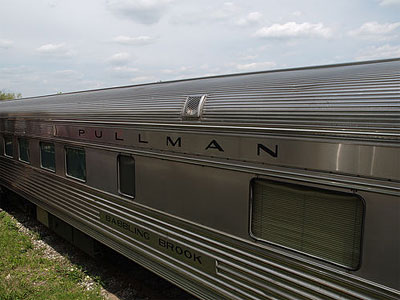
[more]
thanks to J-Walk Blog
oil
You might have to scroll down to the June 12 entry.
The Clusterfuck Nation Chronicle
June 12, 2005
|
Which is that what you see in California is a society with a tragic destiny. I was all over the Bay Area earlier in the week, from San Francisco to Silicon Valley to Berkeley and even down to Santa Cruz, and that was bad enough, But then I got down to Los Angeles on Friday and have been in a state of pathological reflex nausea ever since. Despite their lame attempts to rebuild a few pieces of the 2000-mile-long streetcar system that they gleefully destroyed in the 1950s, life here is all about cars and it will never not be about cars -- until the reality of our oil predicament falls on the hapless public like a hammer of God and the people of California die for their fucking cars in their fucking cars and over their fucking cars. I understand that the scene here is not qualitatively different from Dallas, Orlando, Atlanta, Northern Virginia, Miami, New Jersey and other cloacal hot-spots of the world's highest standard of living. But I digress again, sitting, as I am, on the floor of terminal P-7 because I cannot find a single electric outlet anywhere near a chair, and being fifty-six years old, with an artificial hip, this is not the most felicitous scheme for composing one's thoughts.
| |
[more]
bellows factors
This post if for those using view cameras. I know there is at least one of you out there. I like doing closeups with my view camera. It's the ultimate macro camera. However, as you move the rear standard back beyond infinity focus you need to add exposure. Determining just how much can be a pain. I found a neat solution with a target you could print out and then with a matching ruler you measure how big it is on the ground glass. (Go to the "Close-up exposure calculating" page.) The ruler then shows what the exposure factor should be.

That worked pretty well but it was difficult getting the target to be square to the lens. A while back Blaine sent me a link to the Quick Disk. It does the same thing but explained that using a circle meant that it didn't have to be square to the lens. You just measured on the long axis of the circle.

But the solution that really is simple is to mark the camera with the bellows factors. I found this idea in Jack Dykinga's book Large Format Nature Photography. He determined where the rear standard would be for each position that required an additional 1/4 stop of exposure and then printed out labels and put them on his view camera. He uses two lenses and so he color coded the labels for each lens. I did the same thing. I printed out green labels for my 127mm Ektar and red labels for my 210mm G-Claron.
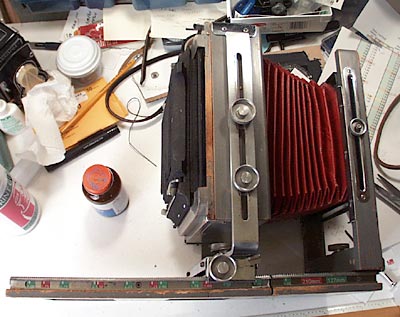

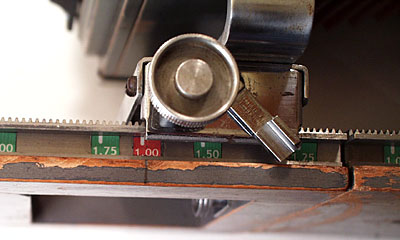
The camera is focused at infinity for the G-Claron 210mm lens.
If the Ektar 127 was on it I would use add almost 1.75 stops.
I Use the rear edge of the standard. I started out by marking where they rear edge was when each lens was focused at infinity. The I used the BE/FL=BEF (bellows extension/focal length=bellows exposure factor) formula found at Nuts and Bolts. As I write this I realize I did it the hard way. I used this formula and created a spread sheet with bellows extensions at every 5mm. Since I just needed the bellows factor at quarter stops I should have used: BE=BEFxFE where the bellows extension equals the bellows extension factor (e.g., 1.25, 1.50, 1.75, etc.) times the focal length. Anyway, however you get there, I just need to see where the rear of the standard is and that is how many stops I need to add to the exposure.
lynching
For many years anti-lynching legislation was bottled up in the Senate by Southerners. A resolution was just passed that apologized for this. Not all the Senators would sign on to support it. They didn't want to be on the record supporting anti-lynching laws. Fucking racists.
Lying on lynching vote
|
What we are talking about, and what we are angry about, is NOT who did or didn't vote for the resolution. In principle, NOBODY voted for the resolution and, at the same time, EVERYBODY did because it was passed "unanimously." What we are upset about is that you ALSO can "cosponsor" legislation before and AFTER it is voted on. Cosponsoring legislation is a way of showing your support the legislation, and usually your intention to vote for it. Apparently this resolution had 84 cosponsors, but 16 Senators refused to cosponsor it.
| |
[more]
Guess who's a Dixiecrat
|
So when they go look for votes, will they be bragging about their pro-dead nigger stand? Or will they just hope that the good 'ol boys will know they opposed apologizing for hanging uppity or disrespectful niggers. I mean, they looked at white women. And that's a hanging offense.
| |
[more]
Hey, it's not like they hung someone who mattered
|
Yes, it WAS Democrats who refused to pass these bills, racists who took pride in keeping niggers in their place. Since 1964, they have migrated to the GOP, you witless fuck. But since you are obviously ignorant of history, twit, let me explain. Once Lyndon Johnson signed the Civil Rights Act, he said "we will lose the south for a generation" and lo and behold, that's what happened. All the segregationists suddenly found that the party of Lincoln could be converted to the party of Jefferson Davis without the moderates saying too much. So while the Dems chased racists from their party, the GOP welcomed them with open arms. Jesse Helms, Strom Thurmond, Jim East, Lester Maddox. All the segs and their friends in the White Citizen's Council found a new home in the GOP. And did the GOP object? Why no. Because that led to the White House. Hell, Reagan even kicked off his 1984 campaign in Philadephia, MS. That's a place which has been in the news lately because they're finally trying someone for the murders of three civil rights workers. You could say it was America's last official lynching.
| |
[more]
tear sheet
I sold a couple of my scanner photographs.

larger image

larger image
They are going to be on a Nike website in Australia and New Zealand as wallpaper that can be downloaded. I really like what they did to them. I'm afraid I can't afford the shoes, though.
wear the bastards down
Acts of Hope
Challenging Empire on the World Stage
|
On January 18, 1915, eighteen months into the first world war, the first terrible war in the modern sense -- slaughter by the hundreds of thousands, poison gas, men living and dying in the open graves of trench warfare, tanks, barbed wire, machine guns, airplanes -- Virginia Woolf wrote in her journal, "The future is dark, which is on the whole, the best thing the future can be, I think." Dark, she seems to say, as in inscrutable, not as in terrible. We often mistake the one for the other. People imagine the end of the world is nigh because the future is unimaginable. Who twenty years ago would have pictured a world without the USSR and with the Internet? We talk about "what we hope for" in terms of what we hope will come to pass but we could think of it another way, as why we hope. We hope on principle, we hope tactically and strategically, we hope because the future is dark, we hope because it's a more powerful and more joyful way to live. Despair presumes it knows what will happen next. But who, two decades ago, would have imagined that the Canadian government would give a huge swathe of the north back to its indigenous people, or that the imprisoned Nelson Mandela would become president of a free South Africa?
Twenty-one years ago this June, a million people gathered in Central Park to demand a nuclear freeze. They didn't get it. The movement was full of people who believed they'd realize their goal in a few years and then go home. Many went home disappointed or burned out. But in less than a decade, major nuclear arms reductions were negotiated, helped along by European antinuclear movements and the impetus they gave Gorbachev. Since then, the issue has fallen off the map and we have lost much of what was gained. The US never ratified the Comprehensive Test Ban Treaty, and the Bush administration is planning to resume the full-fledged nuclear testing halted in 1991, to resume manufacture, to expand the arsenal, and perhaps even to use it in once-proscribed ways.
It's always too soon to go home. And it's always too soon to calculate effect. I once read an anecdote by someone in Women Strike for Peace, the first great antinuclear movement in the United States in 1963, the one that did contribute to a major victory: the end of aboveground nuclear testing with its radioactive fallout that was showing up in mother's milk and baby teeth. She told of how foolish and futile she felt standing in the rain one morning protesting at the Kennedy White House. Years later she heard Dr. Benjamin Spock -- one of the most high-profile activists on the issue then -- say that the turning point for him was seeing a small group of women standing in the rain, protesting at the White House. If they were so passionately committed, he thought, he should give the issue more consideration himself.
| |
[more]
goodbye to an old friend
I went into Seattle yesterday. I went to the G. Gibson Gallery to talk about selling some of the photographs that I bought 30 years ago so that I can pay some bills and buy a printer and a scanner. I need to get into the big city more often. They took out all the parking meters! They were replaced by one meter that services the entire block. The meter takes coins and credit cards and spits out a receipt that you tape to the inside of your passenger's window. I felt like some country boy in the big city. I finally figured it out. I brought several photographs but the one that I had been talking to Gail Gibson about was a Brett Weston print.
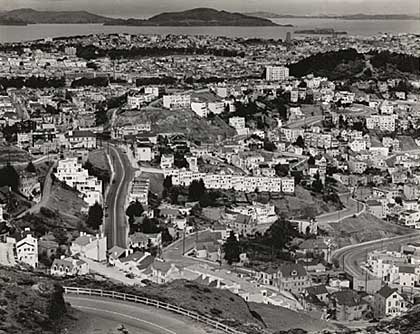
Brett Weston
San Francisco 1937
She liked the print and is going to handle it. Brett Westons are going for more that I thought. I also brought my other prints and she gave me some price estimates. The surprise was that Minor White prints were going for as much as the Brett Westons. Unfortunately my Minor white print, Ritual Stones, had some surface damage from the glass breaking in the frame. Bummer! But she gave me a name for a paper conservator that works on photographs. I think I will restore the Minor White and that should finish off my studio and build a darkroom.
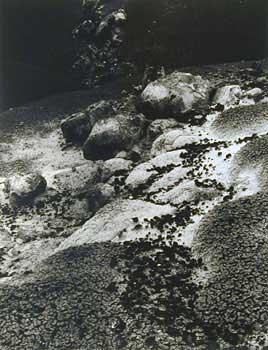
Minor White
Ritual Stones
Sad to leave the Weston with Gail but looking forward to finally being able to print like I want. I am keeping my Andre Kertesz and George Tice.
books/photography
J-Walk just reread Zen and the Art of Motorcycle Maintenance and found it reareadable. I must reread it myself. But the really cool thing is that he found a website with pictures from the motorcycle trip in 1968 that the book is based on. And it has pictures of the route from recent pilgrimages.
Pictures from Robert Pirsig's original 1968 trip.
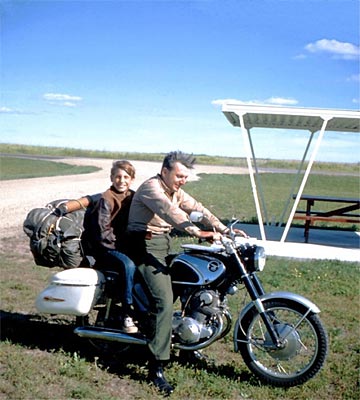
[more]
oil
Saudi Flack: Oil Plentiful, Don't Worry
|
Adel al-Jubeir, to Americans one of the most familiar Saudi faces and the top foreign policy adviser and public relations flack for Saudi Arabia's Crown Prince Abdullah, said Wednesday, "The world is more likely to run out of uses for oil than Saudi Arabia is going to run out of oil." Ahhhhhhhh. Big sigh of relief.
Over the next five years, the Saudis have promised to boost production from their current 9.5 million barrels a day to 12.5 million. Al-Jubeir claims that the Saudis could pump at this level for the next 50 years.
To say that skeptics abound is an understatement.
| |
[more]
bug parts
Anatomical Atlas of Flies
(broadband only)

[more]
thanks to Pharyngula
empire
The Scourge of Militarism
Rome and America
By Chalmers Johnson
|
The collapse of the Roman republic in 27 BC has significance today for the United States, which took many of its key political principles from its ancient predecessor. Separation of powers, checks and balances, government in accordance with constitutional law, a toleration of slavery, fixed terms in office, all these ideas were influenced by Roman precedents. John Adams and his son John Quincy Adams often read the great Roman political philosopher Cicero and spoke of him as an inspiration to them. Alexander Hamilton, James Madison, and John Jay, authors of the Federalist Papers, writing in favor of ratification of the Constitution signed their articles with the name Publius Valerius Publicola, the first consul of the Roman republic.
The Roman republic, however, failed to adjust to the unintended consequences of its imperialism, leading to a drastic alteration in its form of government. The militarism that inescapably accompanied Rome's imperial projects slowly undermined its constitution as well as the very considerable political and human rights its citizens enjoyed. The American republic, of course, has not yet collapsed; it is just under considerable strain as the imperial presidency -- and its supporting military legions -- undermine Congress and the courts. However, the Roman outcome -- turning over power to an autocracy backed by military force and welcomed by ordinary citizens because it seemed to bring stability -- suggests what might happen in the years after Bush and his neoconservatives are thrown out of office.
| |
[more]
photography
Least Wanted's photos
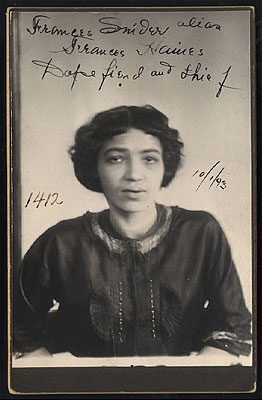
[more]
thanks to consumptive.org
health care
One Nation, Uninsured
by Paul Krugman
|
Harry Truman tried to create a national health insurance system. Public opinion was initially on his side: Jill Quadagno's book "One Nation, Uninsured" tells us that in 1945, 75 percent of Americans favored national health insurance. If Truman had succeeded, universal coverage for everyone, not just the elderly, would today be an accepted part of the social contract.
But Truman failed. Special interests, especially the American Medical Association and Southern politicians who feared that national insurance would lead to racially integrated hospitals, triumphed.
Sixty years later, the patchwork system that evolved in the absence of national health insurance is unraveling. The cost of health care is exploding, the number of uninsured is growing, and corporations that still provide employee coverage are groaning under the strain.
So the time will soon be ripe for another try at universal coverage. Public opinion is already favorable: a 2003 Pew poll found that 72 percent of Americans favored government-guaranteed health insurance for all.
But special interests will, once again, stand in the way. And the big debate among would-be reformers is how to deal with those interests, especially the insurance companies. These companies played a secondary role in Truman's failure but have since become a seemingly invincible lobby.
| |
[more]
the russians come to the rescue again
Actually, the Ukranians or the country know as the Former Soviet Union. I just won a Hasselbladski — a Salut-S medium format camera, for $93. A good price even for the Salut-S. It's all Ken Smith's fault.
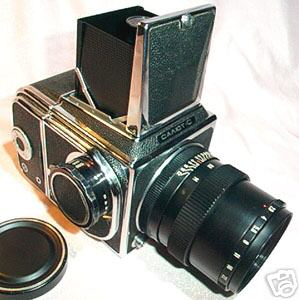
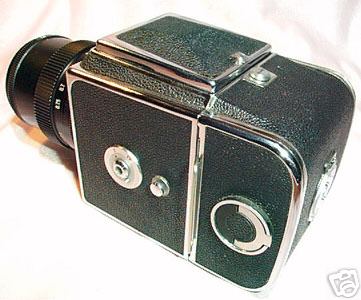
When Ken was on the Island for his show at Bayview 3 weeks ago I had the chance to hold his Salut-S. It's a beautiful camera. It's a copy of the original Hasselblad which had a focal plane shutter. A design Hasselblad gave up on early when they scrapped the focal plane shutter and went to leaf shutters. It's a complex camera and, given Russian quality control (or lack of it), they can be problematic. Ken had suggested the eBay seller Kubanoid who runs film through these cameras and has a 99.6% approval rating. Ken has been lucky with his. Like with the Russian rangefinders, there is a sequence of operations that one does not violate without breaking something. But I like the format and ergonomics.
But what there really is to like are the lenses. Excellent lenses at very affordable prices. From 30mm to 300mm. There is currently a 30mm (equivalent to 18mm on 35mm cameras) lens on eBay with a BIN of $170. The Hasselblad 38mm, which is a lens on a special body will run $3,000 on eBay. And if I want to pay top dollar for Salut (or Kiev 88) lenses, I can go to Arax and pay $249 for the 30mm. Arax also repairs and rebuilds Salut and Kiev cameras and lense. A CLA is $37. Other upgrades are available for very low prices. Ken had Arax go over his Salut-S.
This will be replacing my Mamiya as my main medium format camera. Even though the Mamiya prices were relatively low, I couldn't afford to expand with other lenses and backs. The Salut-S will let me do that. How about a MIR 3 3.5/65mm with a BIN of $39?
Down the slippery slope I go.
Salyut-C
SALYUT
Kievaholic Klub
|
|
|
|

















